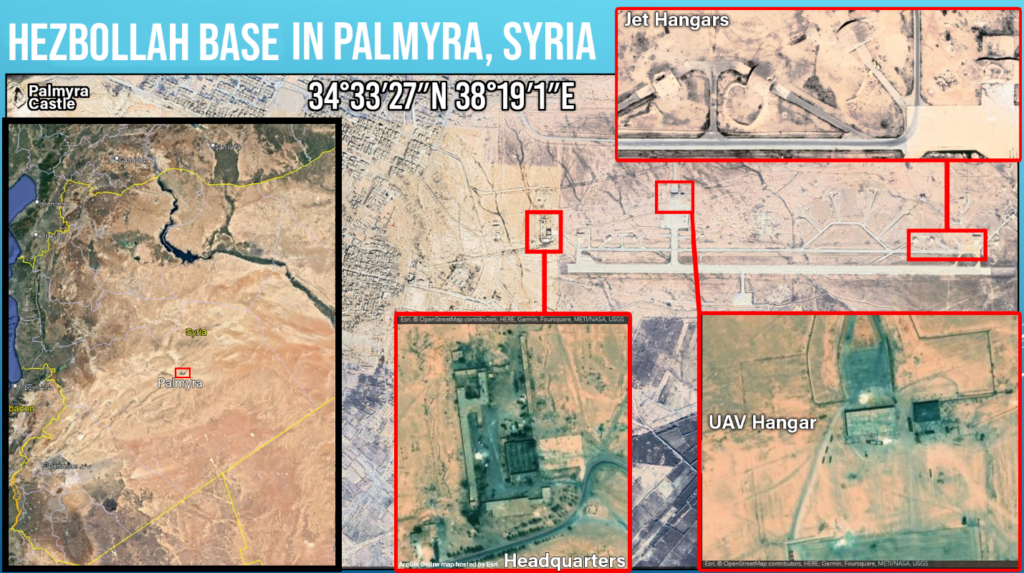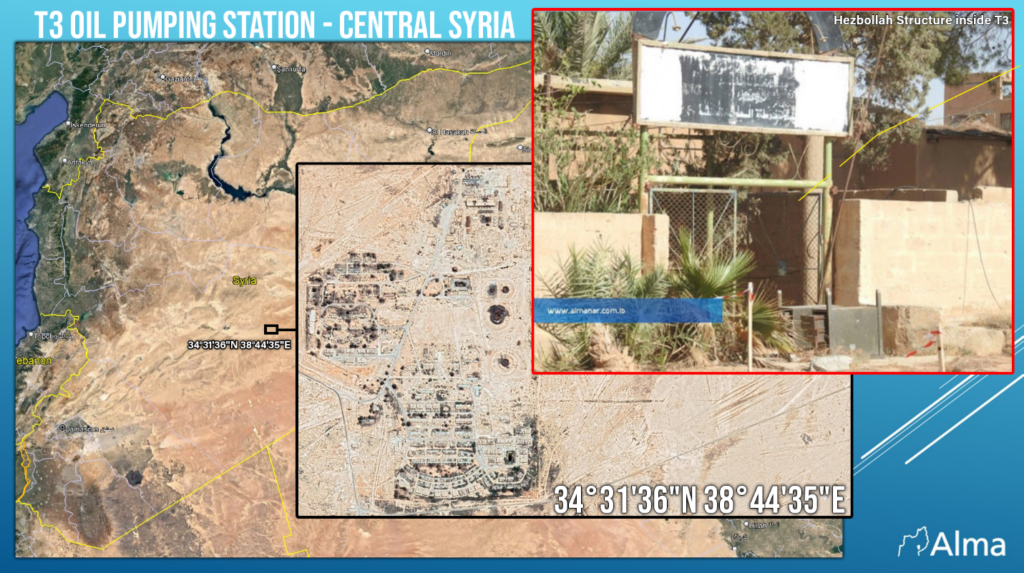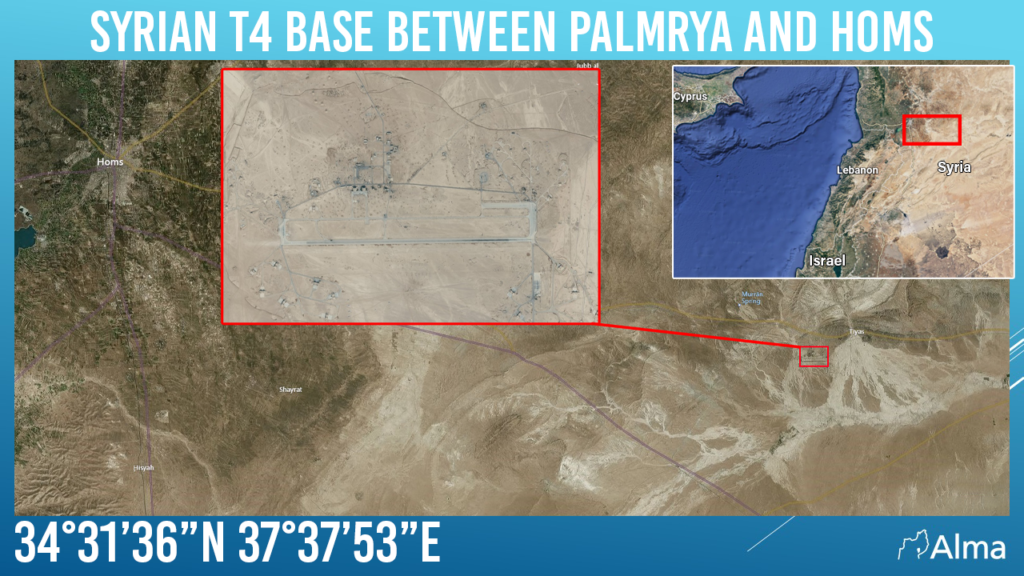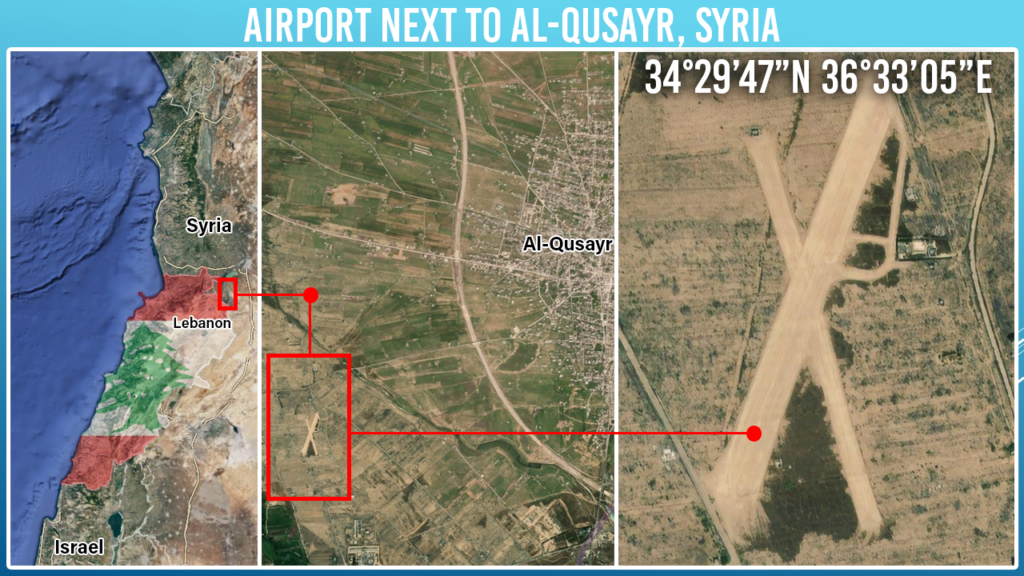Hezbollah’s UAV activity in Syria is carried out through the aerial unit and the 127th unit. In eastern Syria, the activity is carried out mainly from the Palmyra military airfield (which we previously reported on) and from two other bases that serve as intelligence surveillance and control centers that monitor the activities of the UAVs, We report on them for the first time. They are located in the desert region, southeast of Palmyra, near two pumping stations (T2 and T3) on the oil pipeline that was previously built between Kirkuk in Iraq and Banias in Syria.

Unit 127 is a classified and clandestine unit. The unit was established by senior Hezbollah operative Hassan al-Lakis, who was assassinated in December 2013 by an unknown assailant in Beirut’s southern suburbs. The unit specializes in the production and maintenance of UAVs and is responsible, among other things, for the maintenance of UAVs operated by Hezbollah’s air unit in Syria. In Syria, Hezbollah operates both Iranian and self-manufactured UAVs.
Unit 127 operates in close cooperation with Unit 340 of the Quds Force. Unit 340 assists in the research and development (military buildup) of Iran’s proxy’s independent weapons production capabilities (Hezbollah in Lebanon, the Houthis in Yemen, the Iraqi militias, the Islamic Jihad in the Gaza Strip, and sometimes even Hamas). Unit 340 is headed by Hamid Fazeli. The assistance provided by Unit 340 in research and development on the proxy’s soil is based on weapons components transported from Iran by Unit 190 of the Qods Force, which is in charge of smuggling weapons.

Its longstanding aerial activity using UAVs in Syria has provided Hezbollah with considerable operational capabilities and experience, which pose a significant security challenge for Israel. This challenge is at Israel’s doorstep in routine times in general and in emergencies in particular. Just recently, Hezbollah launched four UAVs at the Karish reservoir to convey a message on the issue of negotiations on the maritime border.
The military airfield of Palmyra in eastern Syria, which serves as a major military base for the radical Shiite axis led by Iran, is home to Hezbollah’s joint Qods Force aerial headquarters and hangars where the UAVs are kept. From this airfield, Hezbollah’s UAVs take off for military operations throughout the eastern region of Syria, emphasizing the area of the land corridor, the al-Tanf area in southeastern Syria, and the Al-Hasakah area in northeastern Syria. From Palmyra Airport, Shahad 129, Mahjar, Ababil, and Murad UAVs are operated.

From the T2 intelligence surveillance base, located west of Al-Bukamal, intelligence surveillance is carried out by UAVs in the area of Al-Tanf in southeastern Syria, where US forces are located and operate together with local militias cooperating with them.

From the T3 intelligence surveillance base, located east of Palmyra, intelligence surveillance is carried out by UAVs in the desert area east of Homs and Palmyra. This area is where ISIS terrorist cells carry out extensive military activity, which threatens, among other things, the routes of the land corridor inside Syria.

In addition to the Palmyra base, UAVs are operated from both the T4 base and the Al-Qusayr area, which we previously reported on. The T4 airport is located near the road connecting the city of Palmyra in the east and the city of Homs in the west, about 60 kilometers west of the city of Palmyra. Al-Qusayr about 20 km southwest of the city of Homs.







